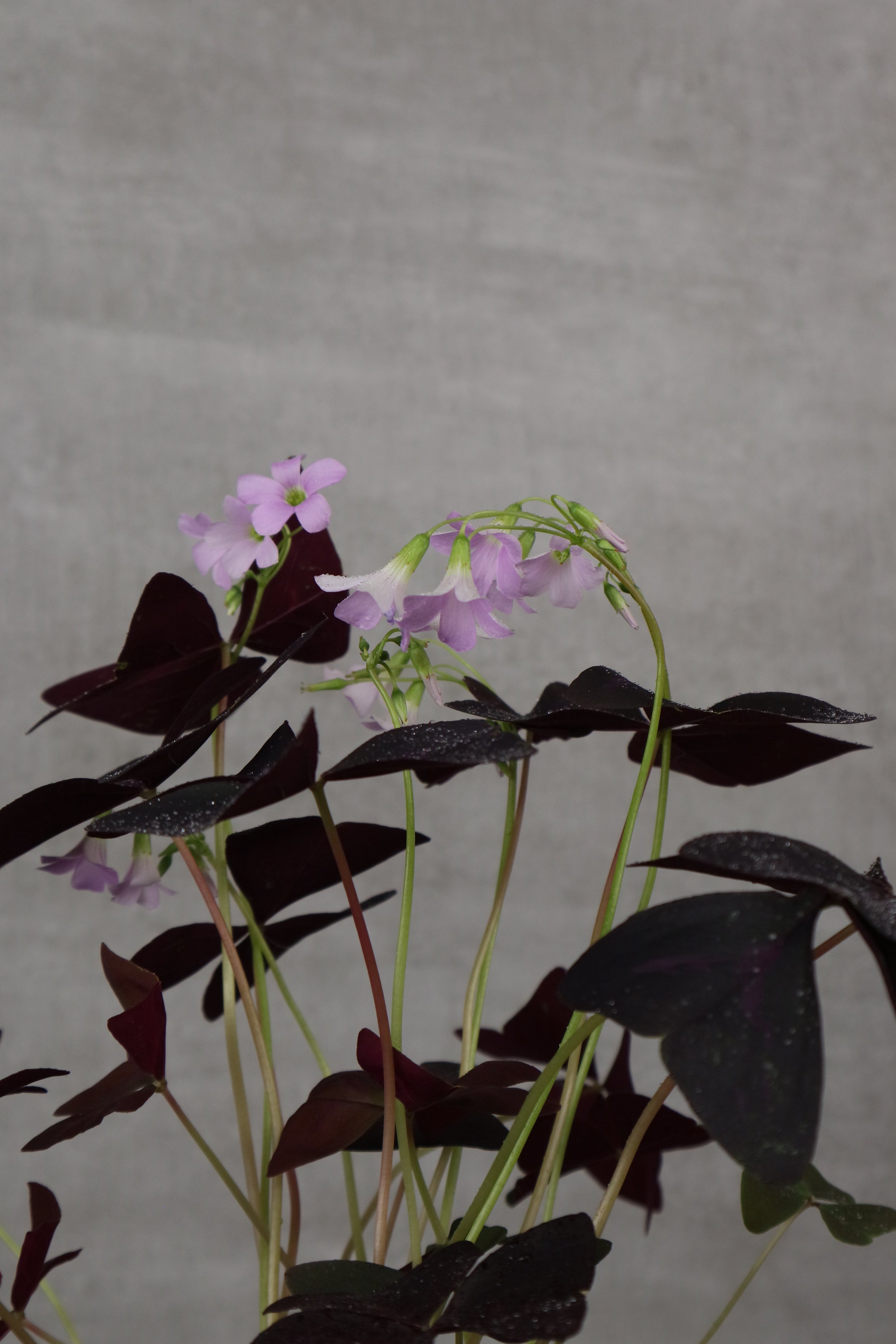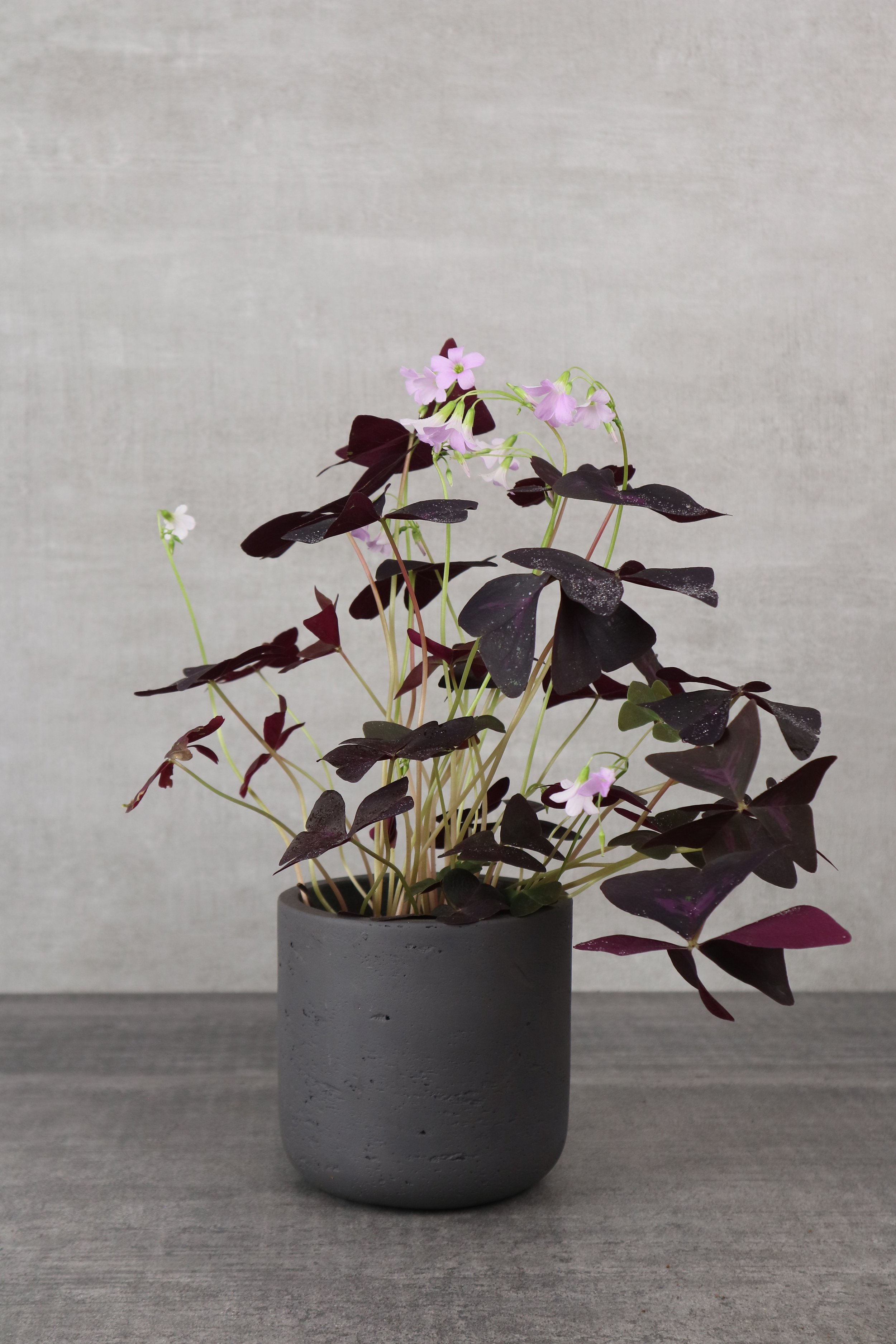Plant Profile
Purple Shamrock
a.k.a. Oxalis Triangularis // Love Plant
The Oxalis Triangularis belongs to the large and varied Oxalis family, which are native to the tropics of South America and South Asia. Often called Purple Shamrock, the Oxalis Triangularis is the variety of Oxalis that is most commonly grown as a houseplant. The plant gets its name due to its unique, triangular shaped purple leaves, which open and close in reaction to the light. During the spring and summer months your Oxalis will bloom for weeks at a time, producing small, pink flowers, helping to ensure that the Purple Shamrock stands out in a sea of green houseplants.
Top Tips
✔ Don’t be alarmed if the Oxalis triangularis’ leaves begin to brown and dry, as this is probably just the plant preparing to enter into a dormancy period.
✔ During dormancy the plant requires a period of darkness, reduced watering and no feeding. When new shoots appear, the period of dormancy is over and the plant should be moved into a sunny spot and normal watering and feeding should resume.
✔ If your Oxalis gets too hot or dry it may force it into dormancy, if this is the case follow normal dormancy care instructions until growth begins again.
Plant Care
-
The Oxalis prefers bright, indirect light. The plant can handle a few hours of direct sunlight each day, however too much direct sunlight can damage the leaves.
-
It is best to water the Oxalis from the bottom. Allow the top soil to dry out between waterings and do not allow the soil to become soggy.
-
The Oxalis isn’t fussy when it comes to humidity and will be fine in average indoor humidity levels.
-
Feed the Oxalis once a month during the spring and summer months when the plant is actively growing. Do not feed the plant during its dormancy in the autumn and winter months.
-
The Oxalis prefers cooler temperatures, between 15 - 21°C is ideal, so it is best to avoid letting the room the plant is positioned in from getting too warm.
-
This plant is toxic if consumed so keep away from children and pets.
-
The Oxalis can be propagated by dividing bulbs and it is best to propagate the plant at the beginning of spring. There will be a number of bulbs within the Oxalis pot, of which only a few belong to the actual plant. Separate this group of bulbs, then plant each of them in separate pots and continue to treat them as normal plants.
-
As the Oxalis is small it only needs to be repotted every few years. When repotting, use fresh soil and move the Oxalis into a container one size up.



Quick plant check up
Yellowing Leaves
This will be the result of the Oxalis being overwatered. Allow the plant to dry out to avoid root rot.
Wilting stems
Plant needs watering or a repot


